Shows
The Jarring Discord of “Voice Against Reason”
.jpg)
.jpg)
Nov 18, 2023–Apr 14
Voice Against Reason
Museum MACAN, Jakarta
Most people tend to believe that artists express themselves as individuals. Yet for many contemporary artists the concept of “voice” serves as an expression beyond their own, acting as a representation of the communal and the historical. For the group exhibition “Voice Against Reason,” co-curators Rizki Lazuardi and Putra Hidayatullah gathered 24 artists and groups from across the Asia Pacific region to question the forms of artistic agency through which artists speak by way of different practices across cultures and eras. The curators aspired to explore, “What motivates an artist, an individual, or an entire community to express seemingly irrational thoughts or to challenge the status quo?”
An examination of artistic strategies in a globalized era, “Voice Against Reason” unfolded around three core threads: “Mother, Father, Fortress,” an interplay between matriarchal comfort and patriarchal control; “#everystupidlittlething,” about processes, catalogues, and archives of the absurd and humorous; and “Obsolescence/Extinctions,” which brought diminishing narratives, dwindling skills, and less-efficient production methods into the spotlight. Despite these categorizations, most artworks held their own without interference from others, except for the large-scale fabric works and paintings by Jumaadi and Khadim Ali in the atrium.
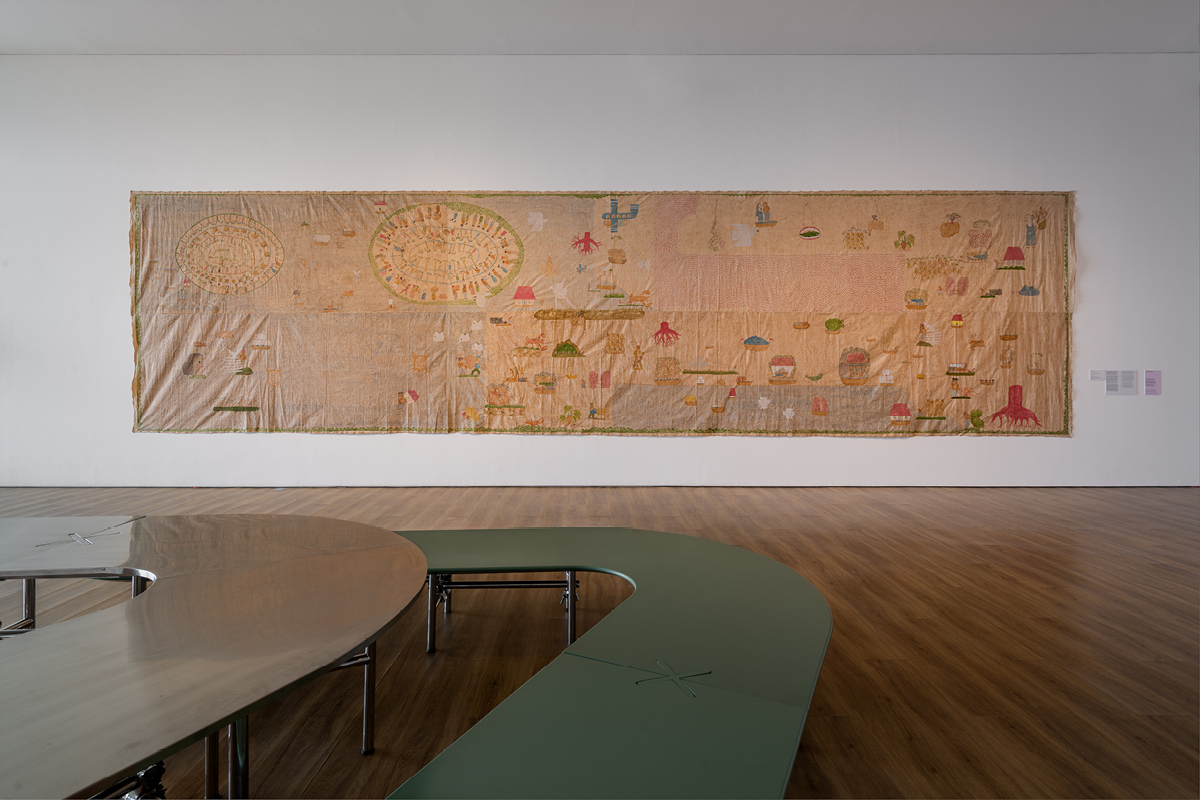.jpg)
.jpg)
Since the time of prehistoric cave paintings, artists have given expression to nature as a reflection of our own history and beliefs. The Australia-based Indonesian artist Jumaadi’s three-by-twelve-meter acrylic painting Migration of Flora and Fauna (2023) used the ikat fabric usually found in Balinese-style shadow play of Kamasan to depict the migration of humans and animals from the fall of the Javanese Majapahit Empire in the 16th century. Also based in Australia, Khadim Ali depicts the scenery of animals escaping from the wildfire of the iconic central Australian rock mountain Uluru in Silent Ark (2023), which consists of four hand-embroidered, 50-square-meter fabric panels tied to the stories of the creation from the Aboriginal Pitjantjatjara People of the area infused his practice in the style of Mughal classical painting. Within these works, the artists portray nature as a symphony of mythology, history, and nature, with one inseparable from the others.
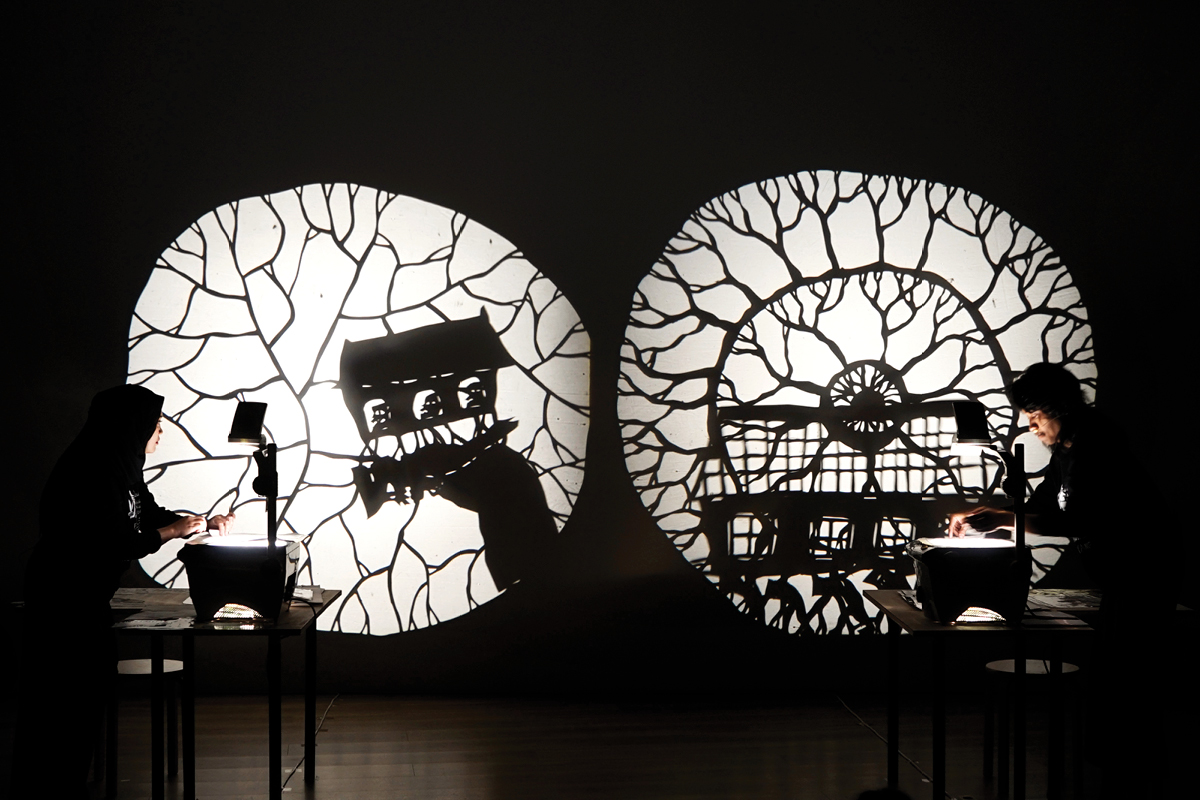.jpg)
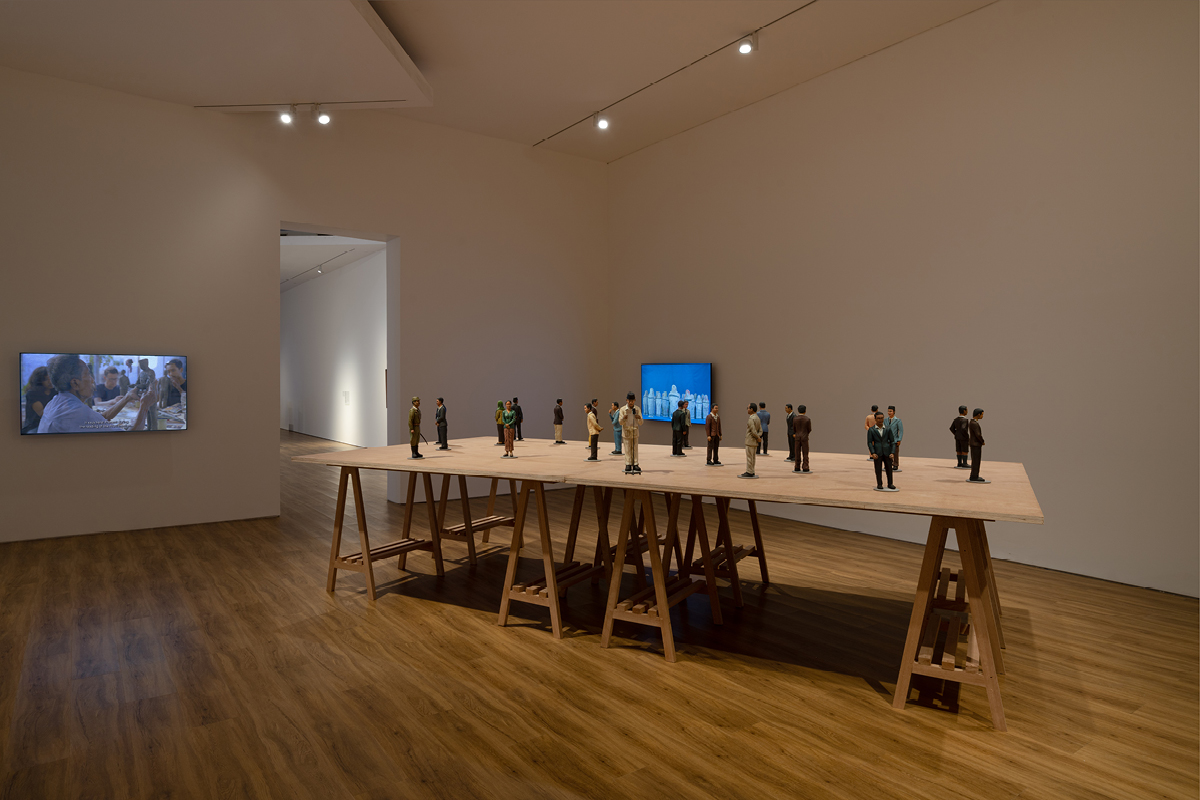.jpg)
When voices come together, harmony and dissonance can emerge in a cacophony of emotions. The installation Sirkus di Tanah Pengasingan: Oyang-oyang Ayang-ayang (2023) by Jumaadi, in collaboration with the Shadow Factory, consists of hundreds of papercuts placed on two overhead projectors with accompanying sound. The magnification of paper cuts during the performance tells the stories of exiled Indonesian nationalist activists in the Boven Digoel prison camp during the early 20th-century colonial era of the Dutch East Indies, with each paper cutout offering a glimpse into the microhistory of individuals engulfed by the grand narrative. Another ambitious collective project, When the flood is over No. 32 (2023), sees Australian artist Tom Nicholson in collaboration with his video team—Ary “Jimged” Sendy, Aufa Ariaputra, Nasikin Ahmad, and art groups Hyphen–, as well as Hj. Kustiyah Edhi Sunarso’s Art House (Griya Seni Hj. Kustiyah Edhi Sunarso)—and which comprises 23 cast-resin figurines of historical figures in Indonesia alongside two video documentaries on the preservation and replication of the eminent Indonesian sculptor Edhi Sunarso’s dioramas. A second set of unpainted molds of the same figures is held permanently at Hj Kustiyah Edhi Sunarso’s Art House (Sunarso’s widow’s studio) and is waiting to replace the originals at Museum Sejarah Nasional when they decay. Nicholson and collaborators’ figures, like Jumaadi’s, create complicated emotions through the entwinement of historical incidents, the human condition, and its reenactments. These works offered a glimpse of the past that has been undermined, letting us reflect upon them.
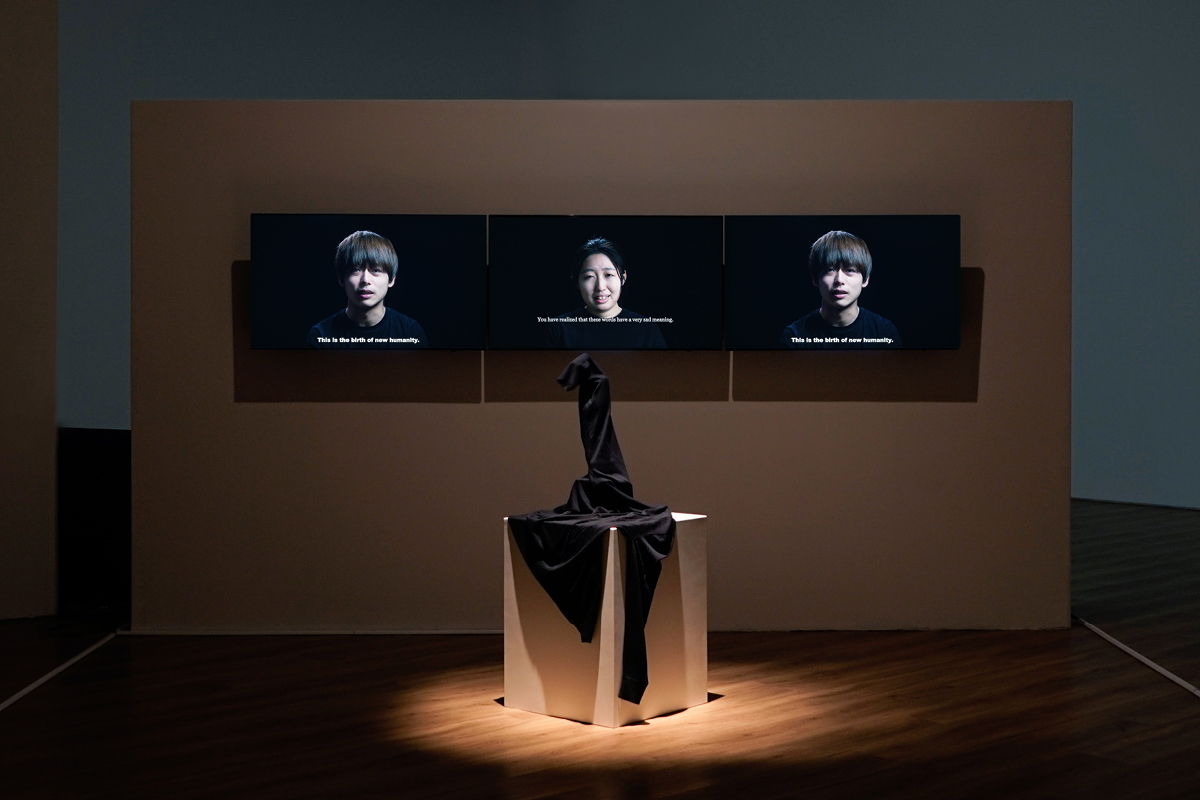.jpg)
.jpg)
To “voice” is to question, heal, lament, or tell a story. Meiro Koizumi’s project Good Machine Bad Machine (2022) is a video installation paired with a robotic arm attached on a pedestal in front of two video screens in which the artist questions the concept of the authoritative voice. Onscreen, we see a video of spoken words like “forgive,” “escape,” and “be a good human” repeated by actors hypnotically. In front of the video is a robotic arm that trembles as if triggered by the speaker’s emotion as reflected by their volume and pitch level. In a separate gallery space was Tuan Andrew Nguyen’s installation A Couple Small Blasts (2023), which resembles one of Alexander Calder’s signature kinetic sculptures (or “mobiles”). A Couple Small Blasts was placed beside Nguyen’s film The Unburied Sounds of a Troubled Horizon (2023), which tells the story of a fictional Vietnamese artist constructing Calder-like works from bomb scraps, as she came to believe she was the reincarnation of the American artist. While Koizumi’s Good Machine Bad raises suspicions about artistic authority, Nguyen’s project serves as a lament about the impact of the American war on Vietnam, with the artist finding a healing process to reflect upon diasporic trajectories.
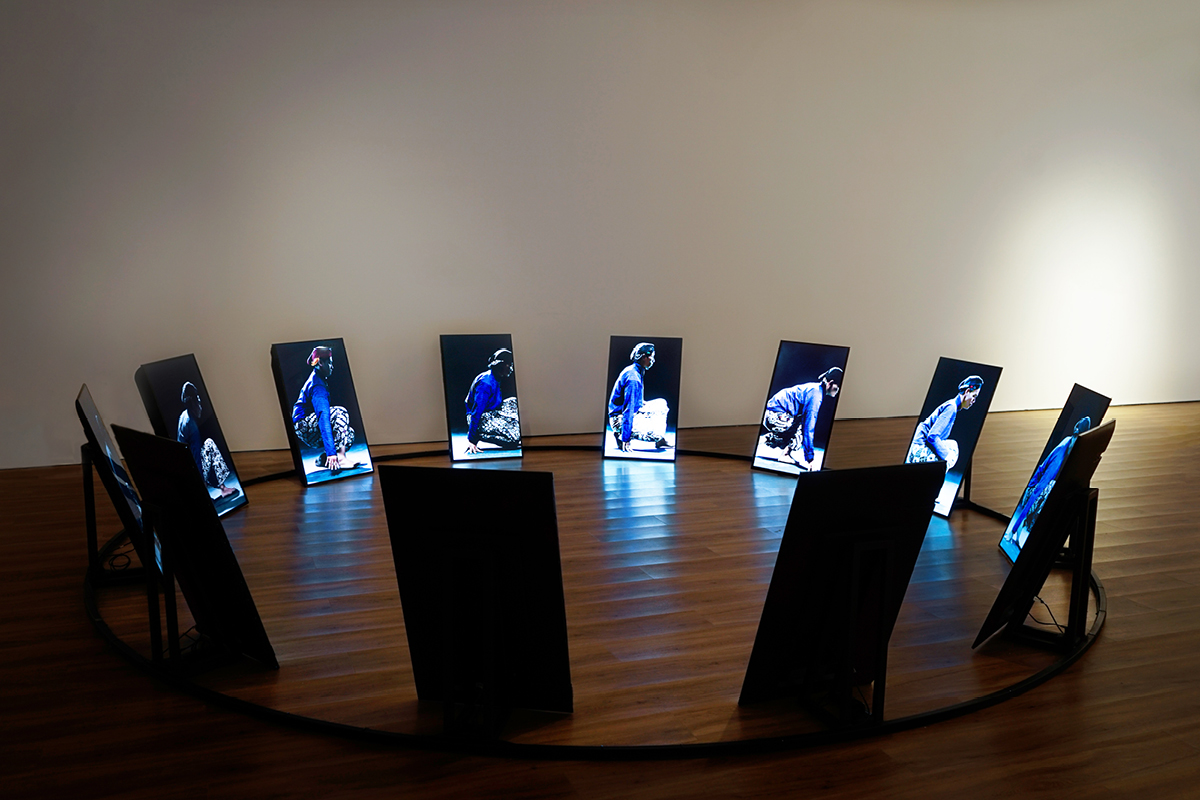
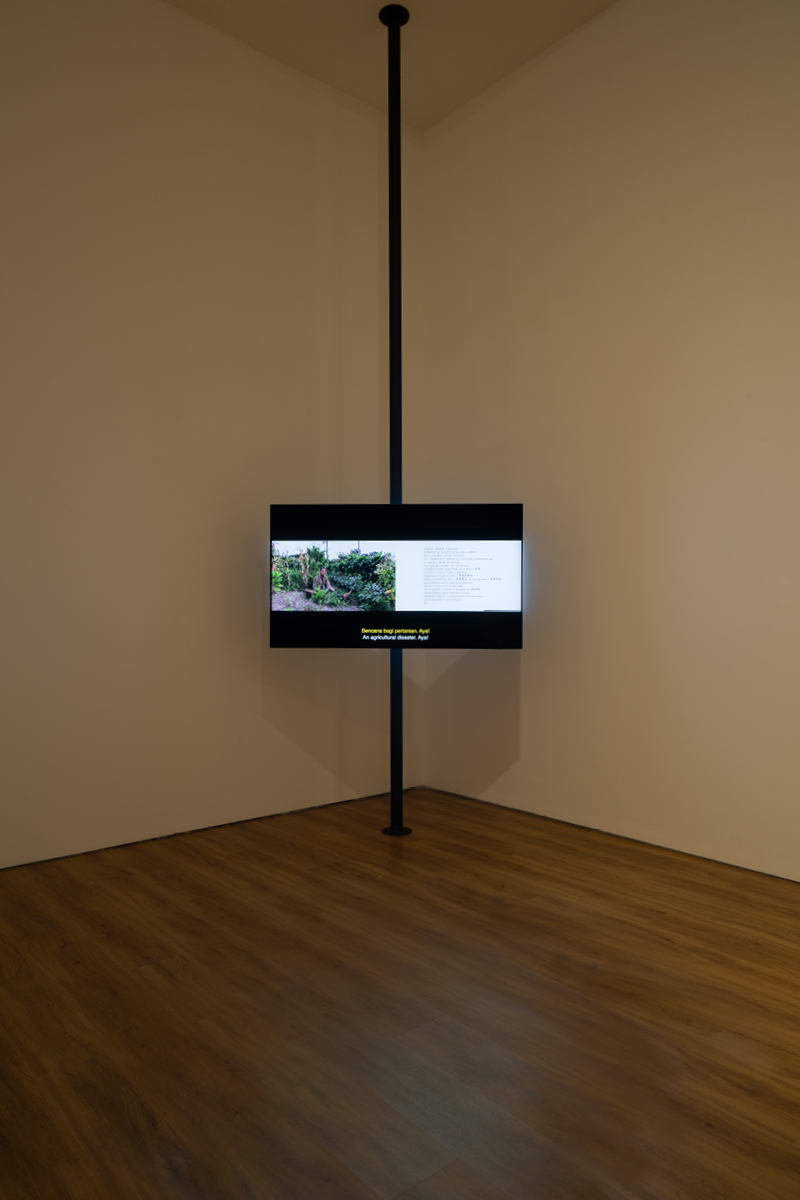.jpg)
A significant portion of the exhibition was dedicated to video works. In the 12 looped videos of Perpetuity (2023), Malaysian artist Nadiah Bamadhaj captures the traditional squatting gesture civil servants are made to perform in front of the nation’s sultan—a graceful pose, but one that is crucial to the subordination to power in a post-feudal society. Bamadhaj critically comments on Malaysian politics where the monarchy still asserts its influence. In the video Snail Paradise Trilogy: Setting Sail or Final Chapter (2021) artist Chang En-Man depicts an Indigenous Paiwanese person singing songs arranged by the artist, telling the story of the arrival of the African snail (Achatina fulica) brought by a Japanese official during the colonial period of Taiwan. Bamadhaj’s and Chang’s videos take similar approaches through the juxtaposition of real-life objects and customs with elements of storytelling that portray the stories of people in connection to the historized, traumatized, petrified, and marginalized past that still permeates the current sociopolitical landscape.
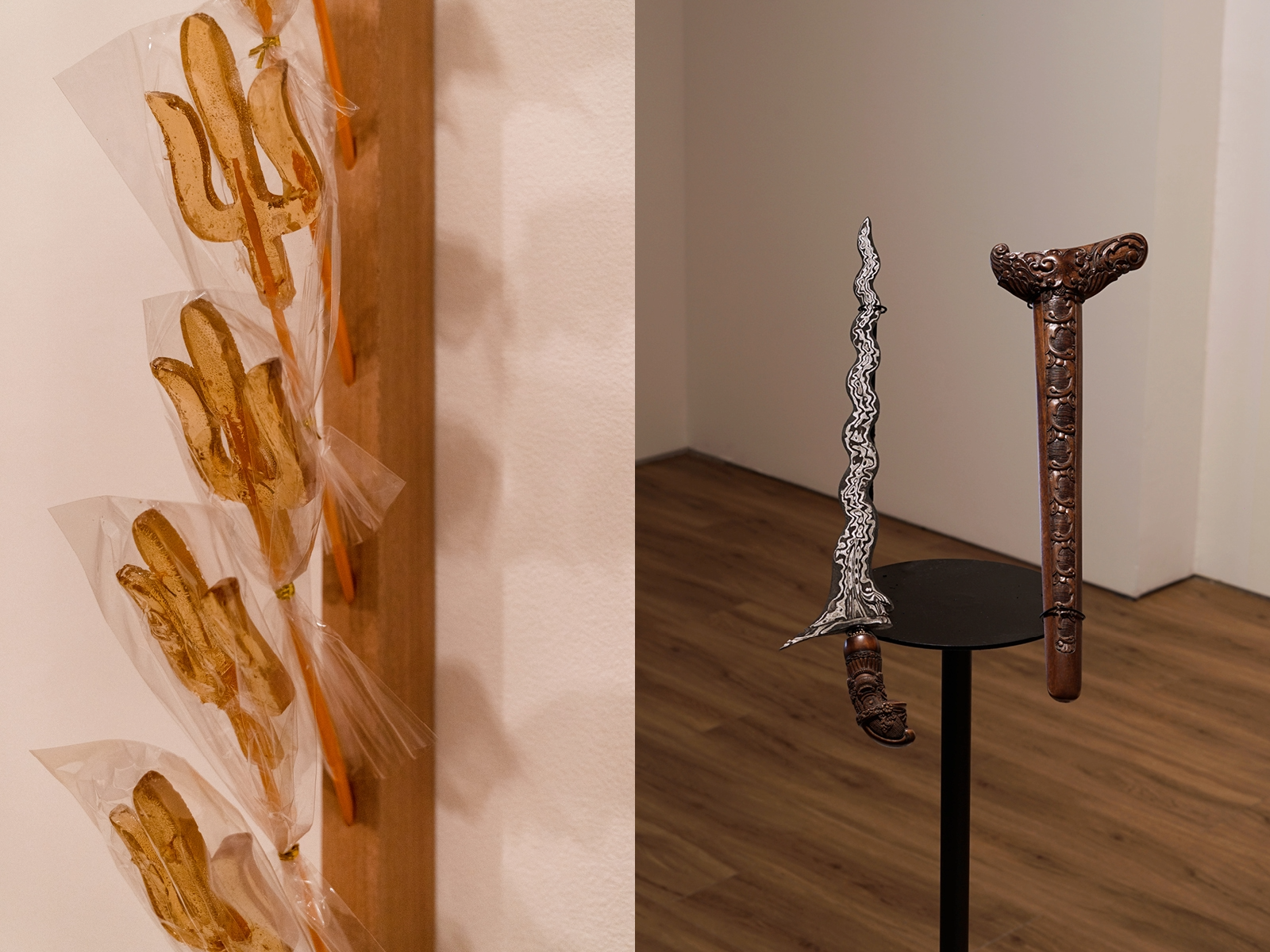
Sometimes, the way a message is delivered—that is, the tone, format, or gesture—is more important than the message. In Tosan Edgy Series 12 Siluet (2022–23), Indonesian artist Galih Johar uses lollipops shaped like traditional Javanese weaponry, such as keris, trisula, and pusaka, to ridicule these sacred symbols. In contrast, Ika Arista, one of the country’s few female empu, or keris makers, demonstrates her skills and passion by presenting the sophistically crafted dagger Keris Panangko (2022), accompanied by a documentary of the artist’s interview and showcasing the process of traditional Indonesian weapon-making. The contrast between Johar’s candy weapon and Arista’s fine craftsmanship poses questions that confront our assumptions about expected forms and materials, despite the lack of overt statements.
.jpg)
.jpg)
By comparison, Shilpa Gupta’s Threat (2008–09) is a stack resembling a wall of 4,500 soap bars with the word “THREAT” imprinted on each one; visitors were invited to take a bar, resulting in the artwork gradually disappearing. While the bricks symbolize the “building blocks” of society or a disinfectant against harmful germs, once dismantled they become a “threatening” tool potentially lobbed at the authorities during civil unrest and protests. Gupta paradoxically suggests that the ephemeralness of a “threat” (or of THREAT) only exists in the way we perceive it. A similar contradiction was found in And That Ocean Too, is a Fiction (2019), in which Thai artist Sikarnt Skoolisariyaporn questions the intellectual legitimacy of copyrights for images of artifacts. The video showcased copyrighted photos of ancient artifacts from unknown creators, with a pile of debris in front symbolizing the fall of institutions after the apocalypse. A sign reading “No Photos Allowed” was placed in front of the work to indicate the paradoxical status of copyright issues and museums as public spaces. Like Gupta’s threatening or “threat-canceling” soap, Skoolisariyaporn creates an intellectual conundrum by transposing the symbolic power between his video, the rubble, and the “no photo” sign, like switching notes in a dissonant harmony in order to seek a more pleasant balance.
At once a noise, a heteroglossia, even a fugue of contrapuntal voices, “Voice Against Reason” was not as unreasonable as expected. Instead, while forms of artistic expression can critique the human condition as it is convoluted by geopolitics and social injustice, we also appreciate them as aesthetic experiences. On the other hand, “to voice” is an act of communication and expression that is inherently political, a vibration that will unavoidably cause disturbance despite its temporal dispersion. Yet in art, there is always an aesthetic or affective sensibility that distances itself from reasoning, an expressivity that one could not simply describe logically. While the exhibition showcased a lineup of artists with strong individual voices who each excelled on their own, a lingering collective voice persisted beyond the final note and left open a polyphony of questions to the audience.
Alex Yiu is associate editor at ArtAsiaPacific.







